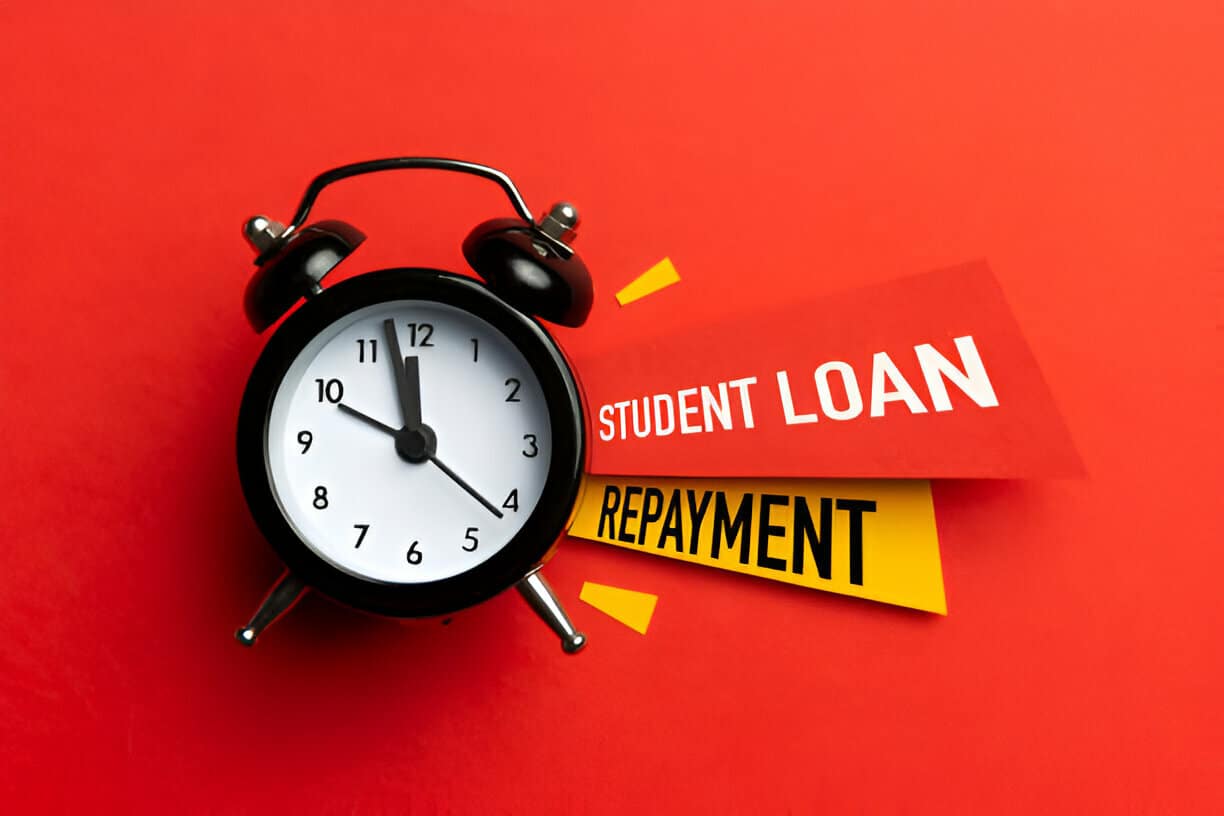Student loan debt has become a significant financial burden for millions of Americans, with the median debt ranging between $20,000 and $24,999. When you’re facing this level of educational debt, having a strategic repayment plan isn’t just helpful—it’s essential for your long-term financial health. Whether you’re struggling to make minimum payments or trying to pay off your loans faster, understanding the options available to address student loan repayment challenges can make a substantial difference in both your current budget and your future financial stability. What separates those who successfully manage their student loans from those who struggle for decades? Often, it comes down to knowing which repayment strategies work best for your specific situation. By overcoming student loan repayment challenges, many have found ways to thrive financially.
The good news is that you have more options than you might realize. From income-driven repayment plans to hardship programs, there are numerous ways to make your student loan burden more manageable without damaging your credit score. But navigating these choices requires careful consideration of your complete loan portfolio, financial circumstances, and long-term goals. How do you determine which loans to prioritize? When does refinancing make sense? And how can you balance student loan repayment challenges with other important financial priorities? The answers depend on your unique financial picture—and finding them is exactly what this guide will help you do.
Understanding Your Student Loan Portfolio
Many borrowers face unique student loan repayment challenges, but with the right strategies, they can achieve financial stability. Understanding your financial situation fully allows you to effectively tackle the student loan repayment challenges that lie ahead. By being proactive about student loan repayment challenges, you can avoid common pitfalls faced by many borrowers. Recognizing the student loan repayment challenges early on can lead to more successful management of your loans.

When tackling student loan repayment, the first critical step is developing a comprehensive understanding of your entire loan portfolio. Federal and private student loans function under distinctly different rules and offer vastly different protections and options. Federal loans typically provide more flexible repayment plans, forgiveness opportunities, and hardship options, while private loans often have fewer built-in protections but might offer competitive interest rates for borrowers with excellent credit.
To effectively manage your loans, you need to access and thoroughly review all loan documentation. For federal loans, the National Student Loan Data System (NSLDS) provides a centralized database where you can view all your federal student loan information. Private loans require contacting each lender directly or reviewing your credit report to identify all outstanding obligations. Pay particular attention to the interest rates, loan terms, monthly payment amounts, and total payoff amounts for each loan, as these details will form the foundation of your repayment strategy.
Creating a comprehensive inventory of your educational debt serves as the roadmap for your repayment journey. This inventory should include:
- Loan type: Federal (Direct, PLUS, etc.) or private
- Current balance: The principal amount you still owe
- Interest rate: Fixed or variable, and the current percentage
- Loan servicer: The company that manages your loan payments
- Repayment status: Whether in repayment, grace period, deferment, or forbearance
- Monthly payment amount: What you’re currently required to pay
- Repayment term: How many months/years remain on your standard plan
Once you have a complete picture of your loan portfolio, you can make informed decisions about prioritization. Generally, loans with the highest interest rates should receive priority for additional payments beyond the minimum due. This approach minimizes the total interest paid over time. However, if you have private loans with fewer protections alongside federal loans, you might consider prioritizing the private loans even if the interest rate is slightly lower, as this reduces your vulnerability to financial hardship.
Financial Hardship Programs: A Temporary Lifeline
Financial hardship programs represent a crucial safety net for student loan borrowers facing temporary economic difficulties. These programs allow qualified borrowers to temporarily suspend or reduce their payments without damaging their credit scores. Understanding these options before you’re in a crisis situation can prevent missed payments and the subsequent negative consequences.
For federal student loans, deferment and forbearance are the primary hardship options. Deferment allows you to postpone payments for up to three years under qualifying circumstances such as unemployment or economic hardship. During deferment on subsidized federal loans, the government covers the interest that accrues. Forbearance, available for up to 12 months at a time (with a usual cumulative limit), also allows payment postponement, but interest continues to accrue on all loan types. Private lenders may offer their own versions of forbearance, though these are typically less generous than federal options and entirely at the lender’s discretion.
Addressing student loan repayment challenges effectively involves prioritizing your highest interest loans to save money. Many borrowers utilize financial hardship programs to navigate temporary student loan repayment challenges. Understanding your options can help you address student loan repayment challenges without damaging your credit.
The qualification process for hardship programs requires thorough documentation of your financial situation. For federal loan deferment based on economic hardship, you’ll need to demonstrate that you’re receiving public assistance, working full-time but earning below 150% of the poverty guideline for your family size and state, or experiencing other qualifying financial difficulties. For private loans, requirements vary by lender, but typically include proof of income reduction, job loss, or significant unexpected expenses like medical bills. Most importantly, these applications should be submitted before you miss payments, as proactive communication demonstrates responsible borrower behavior and increases your chances of approval.
Proper documentation is essential for addressing student loan repayment challenges in a timely manner.
When considering timeline factors, remember that hardship programs are designed as temporary solutions, not long-term repayment strategies. Most forbearance periods last 12 months at maximum, with the possibility of renewal in some cases. During this time, develop a plan for when regular payments resume, as interest will continue to accrue (and may be capitalized) during most relief periods. The goal should be to use this temporary breathing room to stabilize your finances and prepare for sustainable repayment when the hardship period ends.
Exploring various repayment strategies can help in overcoming student loan repayment challenges effectively. Adapting your repayment strategy can be key to minimizing student loan repayment challenges.
Strategic Repayment Approaches for Different Financial Situations
Refinancing options can help resolve certain student loan repayment challenges, depending on your financial circumstances. Directing financial windfalls to your highest-interest loans can alleviate student loan repayment challenges over time. Balancing student loan repayment challenges with other financial obligations is essential for long-term financial health.
Developing a repayment strategy that aligns with your unique financial situation can dramatically impact both your monthly budget and the total amount you’ll pay over the life of your loans. For federal student loans, income-driven repayment (IDR) plans can be lifesavers for borrowers with high debt relative to their income. These plans—including Income-Based Repayment (IBR), Pay As You Earn (PAYE), and Revised Pay As You Earn (REPAYE)—cap monthly payments at a percentage of your discretionary income, typically 10-20%. This approach benefits those working in lower-paying fields or those experiencing income volatility, as payments adjust based on annual income certification.
Maintaining an awareness of student loan repayment challenges can prevent damage to your credit score.

When managing multiple loans, two popular repayment methods emerge: the avalanche and snowball approaches. The avalanche method directs extra payments toward the highest-interest loans first, which mathematically saves the most money over time. The snowball method, in contrast, focuses extra payments on the smallest balance loans first, regardless of interest rate. While this approach may cost more in total interest, the psychological benefit of completely eliminating individual loans sooner can provide motivation to continue the debt repayment journey. Your personal psychology around debt repayment matters—the mathematically optimal approach only works if you stick with it.
Refinancing represents another strategic option, particularly for borrowers with excellent credit scores and stable income. When you refinance, a private lender pays off your existing loans and issues a new loan, ideally with a lower interest rate or more favorable terms. This approach works best for borrowers with private loans or those with federal loans who don’t anticipate needing income-driven repayment options or loan forgiveness. However, refinancing federal loans means permanently surrendering valuable federal protections like deferment, forbearance, and forgiveness options—a trade-off that requires careful consideration.
Effective student loan management also requires thoughtful allocation of financial windfalls. When you receive tax refunds, work bonuses, or other unexpected income, consider directing a significant portion toward your student loans, particularly those with the highest interest rates. Even one-time extra payments can substantially reduce the principal balance, decreasing the amount of interest that accrues over time and potentially shortening your repayment period by months or even years.
Balancing student loan repayment with other financial priorities requires a holistic view of your finances. While aggressive loan repayment might seem appealing, it shouldn’t come at the expense of building an emergency fund, capturing employer retirement matching contributions, or addressing high-interest debt like credit cards. A balanced approach might involve making minimum payments on student loans while addressing more urgent financial needs, then increasing student loan payments once your financial foundation is secure. The median borrower owes between $20,000 and $24,999 in student debt, representing a significant obligation that should be addressed within the context of your complete financial picture.
Long-term planning is critical to effectively overcoming student loan repayment challenges and achieving financial stability. Understanding the impact of minimum payments on your student loan repayment challenges is essential for financial planning.
Protecting Your Credit While Managing Student Debt
Student loans impact your credit profile differently than other forms of debt, making it essential to understand these nuances when managing your repayment strategy. Unlike credit cards or auto loans, student loans are categorized as installment loans and can actually help diversify your credit mix—a positive factor in credit scoring models. Additionally, student loans often represent some of the oldest accounts in young borrowers’ credit histories, contributing positively to the length of credit history component of your score.
Tax considerations can also play a role in addressing student loan repayment challenges effectively. Integrating your student loan repayment challenges into your overall financial strategy is key for success.
When payment difficulties arise, communication with your loan servicer becomes your most powerful tool for protecting your credit score. Contact your servicer immediately—before missing a payment—to discuss options like changing your payment due date to align better with your pay schedule or exploring hardship options. Document all communications, including representative names, dates, and summaries of discussions. This documentation proves invaluable if disputes arise later regarding what options were presented or what agreements were reached. Remember that loan servicers are required to work with borrowers to prevent delinquency and default, so approaching these conversations with specific questions about available options often yields better results than general requests for help.
Regular monitoring of your credit can help you manage the student loan repayment challenges you face.
Understanding the credit implications of different relief options helps you make strategic decisions during financial challenges. Deferment and forbearance both allow you to temporarily pause payments without negative credit reporting, though interest typically continues to accrue. In contrast, missing payments without an approved relief option leads to delinquency after 30 days and potential default after 270 days for federal loans (timeframes vary for private loans). Default delivers severe credit damage that can persist for seven years and triggers additional consequences like wage garnishment, tax refund interception, and loss of eligibility for future federal student aid.
Regular monitoring of your credit report for accuracy regarding student loan reporting constitutes an essential practice for all borrowers. Review your reports from all three major credit bureaus (Equifax, Experian, and TransUnion) at least annually through AnnualCreditReport.com. Pay particular attention to how your student loans are reported, checking for accurate loan balances, payment histories, and account statuses. Errors in reporting—such as loans incorrectly shown as delinquent when they’re in approved deferment—should be disputed promptly both with the credit bureaus and your loan servicer to prevent unwarranted damage to your credit profile.
If you’ve already experienced credit damage from student loan challenges, focused rebuilding efforts can help restore your financial standing. Once your loans are back in good standing through rehabilitation, consolidation, or other resolution methods, consistent on-time payments become your most powerful tool for credit recovery. Consider using tools like secured credit cards or credit-builder loans alongside your student loan repayment to demonstrate responsible credit management across multiple account types. With time and consistent positive payment history, the negative impact of past student loan issues will diminish, especially as you build new positive credit references.
Long-term Planning: Beyond Minimum Payments
Understanding the true cost of making only minimum payments reveals why strategic long-term planning is essential for student loan management. When you pay only the minimum required amount each month, a substantial portion goes toward interest rather than reducing the principal balance. For a borrower with the median student debt of $20,000-$24,999 at a 5% interest rate on a standard 10-year repayment plan, the total interest paid over the life of the loan would exceed $5,000. Extending repayment to 20 or 25 years through certain income-driven plans might lower monthly payments but can more than double the total interest paid over time.
Accelerating loan payoff without creating financial strain requires thoughtful strategy rather than drastic budget cuts. Even modest additional payments can significantly impact your repayment timeline. For example, paying just $50 extra per month on a $20,000 loan with 5% interest could shorten your repayment period by nearly two years and save over $1,000 in interest. Consider automating these additional payments to ensure consistency. Another effective approach involves maintaining your same payment amount after any income-driven recertification that would lower your required payment. This creates a painless way to pay extra without adjusting your budget.
Employer assistance programs represent an increasingly valuable resource for student loan repayment. More companies now offer student loan repayment benefits as part of their compensation packages, typically contributing $50-$300 monthly toward employees’ student loans. These programs often have service requirements or vesting periods, so understand the terms before counting on this assistance for your repayment strategy. For those working in public service, nursing, teaching, or certain other professions, forgiveness programs can provide substantial relief. Public Service Loan Forgiveness (PSLF) offers complete forgiveness of remaining federal Direct Loan balances after 120 qualifying payments while working for eligible employers, though meticulous documentation of employment certification and payment history is essential.
Tax considerations also play an important role in comprehensive student loan management. Student loan interest deductions allow qualified borrowers to deduct up to $2,500 in student loan interest paid each year, potentially reducing your tax liability. This deduction phases out at higher income levels, so consult with a tax professional about your specific situation. Additionally, some states offer tax incentives for student loan repayment or 529 college savings plans that can be used for loan repayment under certain circumstances. Understanding these tax benefits ensures you capture all available advantages within your repayment strategy.
Integrating student loan repayment into broader financial goals requires viewing your loans within the context of your complete financial picture. While eliminating student debt represents an important milestone, it shouldn’t necessarily take precedence over all other financial objectives. Consider the interest rates on your student loans compared to potential returns from retirement investments or the interest rates on other debts. Generally, high-interest debt (typically credit cards) should be prioritized over student loans, while retirement contributions—at least enough to capture employer matching—should continue even while paying down student debt. This balanced approach ensures progress toward multiple financial goals simultaneously rather than addressing them sequentially, which often proves more efficient in building long-term financial security.
Conclusion: Taking Control of Your Student Loan Repayment Challenges Journey
Managing student loan repayment challenges doesn’t have to be overwhelming when you approach it strategically. By thoroughly understanding your loan portfolio, exploring hardship options when necessary, implementing targeted repayment strategies, protecting your credit, and integrating loan payments into your broader financial plan, you can transform what feels like an insurmountable burden into a manageable part of your financial life. The difference between those who successfully navigate student loan repayment challenges and those who struggle for decades often comes down to proactive management and informed decision-making—not just income level or loan amount.

Your student loan repayment challenges represent just one chapter in your financial story—not the entire narrative. While the median debt of $20,000-$24,999 requires serious attention, it shouldn’t prevent you from building emergency savings, contributing to retirement, or working toward other important goals. By applying the strategies outlined in this guide, you’re not just paying off debt; you’re developing financial skills that will serve you throughout your lifetime. Remember, how you handle your student loan repayment challenges today will shape not just your credit score, but your relationship with money for years to come—isn’t that worth investing the time to get it right?


